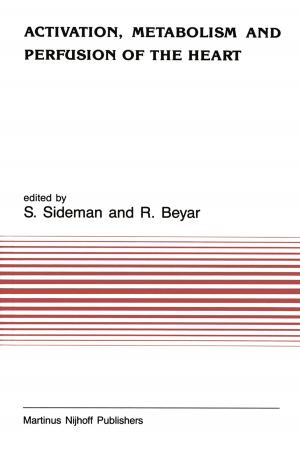Coronary Pressure
Nonfiction, Health & Well Being, Medical, Specialties, Internal Medicine, Cardiology| Author: | B. de Bruyne, N.H. Pijls | ISBN: | 9789401588348 |
| Publisher: | Springer Netherlands | Publication: | June 29, 2013 |
| Imprint: | Springer | Language: | English |
| Author: | B. de Bruyne, N.H. Pijls |
| ISBN: | 9789401588348 |
| Publisher: | Springer Netherlands |
| Publication: | June 29, 2013 |
| Imprint: | Springer |
| Language: | English |
Cardiologists must answer three important questions when evaluating and treating patients with a coronary artery stenosis. As a physiologist: "What is the effect of this stenosis on coronary blood flow and myocardial function?"; as a clinician: " Is this lesion responsible for the patient's symptoms?"; and finally as an interventionalist: "Will revascularization of this artery improve the patient?" Fundamentally, the answer to these questions can be given to a large extent by measuring coronary pressure. That is the rationale of writing this book. 1. 1 Historical overview. Andreas Gruentzig and most interventional cardiologists in the early days of PTCA, had the intuitive feeling that pressure measurements could help to establish the severity of a coronary stenosis and to monitor the progress and result of a coronary intervention. At that time, measuring coronary pressure by the balloon catheter was part of a standard procedure. A residual transstenotic gradient of less than 15 mmHg was generally considered as a good result. Later, however, it turned out that measuring these (resting) gradients with balloon catheters was inaccurate an only had a limited prognostic value. Moreover, because there was no consistent theory to correlate pressure measurements to blood flow, the interest in measuring coronary pressures faded and disappeared almost completely with the introduction of new balloon catheters not intended for pressure measurement.
Cardiologists must answer three important questions when evaluating and treating patients with a coronary artery stenosis. As a physiologist: "What is the effect of this stenosis on coronary blood flow and myocardial function?"; as a clinician: " Is this lesion responsible for the patient's symptoms?"; and finally as an interventionalist: "Will revascularization of this artery improve the patient?" Fundamentally, the answer to these questions can be given to a large extent by measuring coronary pressure. That is the rationale of writing this book. 1. 1 Historical overview. Andreas Gruentzig and most interventional cardiologists in the early days of PTCA, had the intuitive feeling that pressure measurements could help to establish the severity of a coronary stenosis and to monitor the progress and result of a coronary intervention. At that time, measuring coronary pressure by the balloon catheter was part of a standard procedure. A residual transstenotic gradient of less than 15 mmHg was generally considered as a good result. Later, however, it turned out that measuring these (resting) gradients with balloon catheters was inaccurate an only had a limited prognostic value. Moreover, because there was no consistent theory to correlate pressure measurements to blood flow, the interest in measuring coronary pressures faded and disappeared almost completely with the introduction of new balloon catheters not intended for pressure measurement.















